Watch collecting is no less prone to the cyclical zeitgeist of the fashion, music, or art worlds, and if you need proof, look to the wrists of high-vis celebrities such as Tyler the Creator and Timothée Chalamet. who have been showing us the trend toward smaller watches. These dudes are wearing Cartiers so petite that they would’ve faced expulsion from the horological sandbox in the early 2000s or, more recently, from hangs with neophyte pandemic collectors and crypto bros who were crazy for big sports watches.
The point being that smaller Swiss made Rolex replica watches are very much in vogue, and, as concerns us here, most of the great ones are nearly a century old. And there’s been a bit of pricing turmoil for Rolex collecting lately. Rolex’s sport models are dropping in value, while the dressier Rolex Day-Date 36 keeps skyrocketing in value—but the even-smaller Rolex Bubblebacks exist as if in a realm of the own, away from the swaying prices of more recent models. As folks finally begin to understand the appeal of a smaller, more elegant watch that is framed by your wrist, rather than one that envelops it, the savvy collector will seek out an old watch that the world largely forgot during my lifetime, but that I’m very happy to say is is ripe for a comeback: Namely, the Rolex Bubbleback.
We recently gave you a complete guide to the Rolex Air-King, which were, until more recently, usually 34 mm in diameter—small even by today’s shrinking standards. But Bubblebacks are typically 32 mm across. For some folks, that sounds too small, but don’t underestimate their wrist presence, nor the fact that those small sizes keep prices down for collectors. We also brought you a complete guide to the Rolex Oyster Bracelet, which can be a relevant companion piece to the guide below, as can our guide on buying your first Rolex.
What Is the Rolex Bubbleback?
“Bubbleback,” like “Pepsi” (of GMT-Master fame), is not an official Rolex name. (You can check out my guides on both Rolex nicknames and Rolex terms to learn more about the unofficial Rollie lingo.) “Bubbleback” is a fun nickname for the earliest generation of CA perfect fake Rolex Oyster Perpetual watches that Rolex began producing in 1931 and continued making through the early 1950s. Like many Rolex products, the Bubbleback didn’t spontaneously materialize out of thin air like half the characters in the Book of Genesis. Rather, it was the product born of constant refinement of non-Rolex-developed inventions into a singular product that was marketed in an ingenious way. Let’s step back in horological history even further…
The early search for a waterproof watch case began during the era of the pocket watch in the the 19th century—Dennison, a British firm, secured a patent in the UK in 1872 for a waterproof case, while Ezra Fitch (of Abercrombie & Fitch fame) secured two in 1878 and 1881 in the U.S. In 1883, Alcide Droz & Fils developed the Imperméable waterproof pocket watch based upon these principles, and in 1917, two Royal Navy submarine commanders took a step into modernity with the first waterproof wristwatch. While they weren’t successful in marketing it, its screw-down caseback and bezel—both of which used compressible gaskets—paved the way for Rolex founder Hans Wilsdorf to come in and do his thing.
In 1925, Paul Peregeaux and Georges Perret provided the final piece of the waterproof puzzle in the form of Swiss patent No. 114948—namely, a crown that could be screwed down. Wilsdorf managed to acquire this patent, and in 1926, he registered his own patent No. 120848, combining the screw-down crown with a screw-down caseback and bezel in the Oyster waterproof case. Wilsdorf was on to something here, but there was one problem: Customers were unused to the idea of the screw-down crown and would forget to secure it before using the watch in and around the water, resulting in numerous complaints to Rolex dealers about their “faulty” cheap Rolex copy watches. But what if the crown didn’t need to be interacted with—what if it could be set once, and then left alone?
This, of course, would necessitate the inclusion of an automatically-wound movement. In 1923, John Hardwood had developed such a movement, but the firm he set up to manufacture it failed at the onset of the Great Depression. In 1931, Wilsdorf once again swooped in and improved upon Harwood’s “bumper” design with a rotor — as developed by Aegler, movement supplier to Rolex — that moved through 360 degrees. Rather than developing an elegant, streamlined, and thin automatic movement from scratch, he chose instead to fit his automatic rotor and winding assembly atop a conventional hand-wound movement, enclosing it in an Oyster case and dubbing the whole shebang “Oyster Perpetual.” The winding rotor necessitated a protruding caseback to accommodate its bulky form, which collectors would later nickname “Bubbleback.”
But what might seem like a lazy approach to watch construction was actually a stroke of genius: Customers could still hand-wind their watch if desired as they got used to the new automatic movement, but necessary interaction was reduced to a minimum—and thus many fewer complaints of “faulty” watches came across Rolex’s desk. At the same time, watchmakers were already familiar with the underlying architecture of the hand-wound base calibers, meaning the Bubblebacks were easily serviceable. This, combined with their robust build quality and wide range of attractive dial sizes, case materials, and strap and bracelet options, made it simple for Rolex’s brilliant marketing team to peddle the Bubbleback to the watch-buying public.
In 1933, the first Bubbleback reference 1858 with the Rolex cal. 520 movement and a three-piece 32mm case design hit the shelves. Rolex continuously iterated upon the overall character of the Oyster Perpetual, swapping out the three-piece case for a simple two-piece design in 1936 with the debut of the references 3131 and 3132. The Bubbleback was available in three sizes, including a 24mm ladies’ version introduced in 1941 that used the cal. 420 movement. (A transitional “Big Bubbleback” or “Semi-Bubbleback” housed in a 34mm case could be considered the direct ancestor of the Datejust, introduced in 1945, while a “boy’s size” in 30mm was somewhat smaller than the average mid-size Bubbleback.) In addition to stainless steel housings, high quality replica Rolex watches were offered in 9 ct, 14 ct, and 18 ct yellow or rose gold cases in solid as well as two-tone construction.
In his excellent collector’s tome “The Vintage Rolex Field Manual ‘Chevalier Edition,’” author Colin A. White documents no fewer than 172 distinct Bubblebacks, including variations of otherwise identical reference numbers in different metals as well as “slash” references (1578/7 and 1578/8, for example). This helps tremendously to limit the playing field somewhat while still accounting for a wide and fascinating variety of Swiss made Rolex replica watches for the interested collector. Reference numbers conveniently begin in the 1,000-series (ref. 1858, for example) and continue sequentially through the 8,000-series. (There is no 7,000-series however.) The sheer variety of available dials, when combined with cases of different metals and sizes, makes for a veritable collector’s paradise.
The Demise, Resurgence, Re-Demise, and (Possible) Re-Resurgence of the Bubbleback
Following the debut of the 34mm “Air” line of automatic Oyster Perpetual models that honored War-time RAF pilots—“Air-King,” “Air-Tiger,” etc.—plus the emergence of the 36mm “Big Bubbleback” and the Datejust in 1945, Rolex moved away from the smaller 32mm Bubbleback into larger-diameter designs. By the time the 36mm Explorer debuted in 1953, the Bubbleback was a relic of the past. However, renewed collector interest in the 1980s — a time before the explosion of interest in stainless steel sports AAA online Rolex super clone watches—saw the Bubbleback ascend to new heights, with prices far outstripping those of Daytonas and Submariners.
“Between maybe 1985 and 1990, the Bubbleback was absolutely the cat’s meow,” says Ken Jacobs, proprietor of L.A.’s Wanna Buy a Watch and an expert dealer of roughly 40 years. “A cool watch in those days meant a vintage watch with charm and character and history, whereas modern watches were largely about function, and not about an aesthetic. At this time, the sport models — which then displaced the Bubblebacks — were not yet popular, or surely not in the American market. Maybe in the late ‘80s or early ‘90s, we began seeing a transition into all the sport models.”
These days, this seems unthinkable, but at the time, significant collectors prized the Bubbleback’s variety of dial configurations and relatively large size, which was emphasized by elements such as hooded lugs and the famed “bubble” caseback, which sat the watch higher off the wrist. As of the 2020s, Bubblebacks form a largely overlooked segment of the Rolex collector’s market, with prices relegated, in many cases, to the sub-$5K mark—though the very best examples can trade hands for well over $10,000. Their relatively small size may make them poised for a comeback given the recent shift to unisex designs and smaller dimensions, though it should be noted that due to the age of Bubbleback movements and the restrictions on sale of parts to third parties, servicing these 1:1 China replica Rolex watches is a costly endeavor. (Indeed, it might be said that collecting “cheap” vintage Rolex is actually a wealthy man’s game: A $3,000 watch that costs $1,000 to fix and must be regularly serviced every few years begins to quickly lose its “affordability” angle.)
Jacobs isn’t exactly bullish on a Bubbleback revival. “The repair of these watches is more and more challenging because of the inaccessibility of parts and watchmakers who don’t want to take it [these repairs] on,” he says. “The most common part that wears on these movements is the auto axle, which is the post and the accompanying mechanisms that support the auto-winding rotor. That rotor turns 360 degrees—there’s a little gear on that rotor that engages another gear which is always winding the mainspring of the watch. So that thin little axle that supports that heavy weight is what gets worn out on these watches.”
Finding excellent Bubbleback examples will also take some work: Peruse the websites and Instagrams of the country’s top vintage Rolex sellers—places like Wind Vintage, 10 Past 10, Second Time Around, and Wanna Buy a Watch — and you’ll rarely find any Bubblebacks. When you do, the dials will often have been refinished. In fact, longtime dealer Eric Wind once asserted that only roughly 1 in 15 or 20 Bubblebacks with the particularly coveted “California” dial is likely original. (The Rolex “Error Proof” dial—with half Arabic and half Roman-numeral markers in radium—which dates to the Second World War era, was often refinished by a business in Los Angeles called Kirk Rich Dial Company, which still exists today. In the 1980s, before originality was so widely prized in vintage Rolex fake watches for sale, owners would take their California-dial Bubblebacks to Kirk Rich, which has the dies necessary to reprint the dials of thousands upon thousands of watches. Someone somewhere began calling the “Error Proof” dial the “California” dial, and the name has since stuck.)
The long and short of collecting the Bubbleback, it would seem, would be not to try it unless one is well capitalized and extremely patient. Jacobs explains more: “It all hinges on the movement. In the 1960s, Rolex introduced the 1500-series caliber—1520 and 1530 were non-chronometer movements, and the 1560, 1565, and 1570 were the chronometer-rated movements. This is the movement in virtually all top Rolex replica watches from, say, 1959 until roughly 1980. The Air-King, the Oyster Perpetual, the Datejust, all the sport models. In 1980, they moved to the cal. 3035 movement, which has a quickset-date function. So the 1500-series movements are plentiful because they used it across all these models.”
In other words, if you like the idea of a Bubbleback but prefer something a bit easier to service, try fake Rolex watches site made after roughly 1960. (34mm Air-Kings, Oyster Perpetuals, and similar models are a good bet.) And if you absolutely must have that vintage Bubbleback—maybe one with a coveted “California” dial—do your research, buy the seller, and prepare yourself mentally, emotionally, and financially for a wild ride. The benefits of owning such an incredible, historical model may well outweigh the costs, however. After all, the entire history of the self-winding, water-resistant wristwatch as we know it today largely started with the Bubbleback.
Replica Rolex Bubbleback Reference 1858 Watches
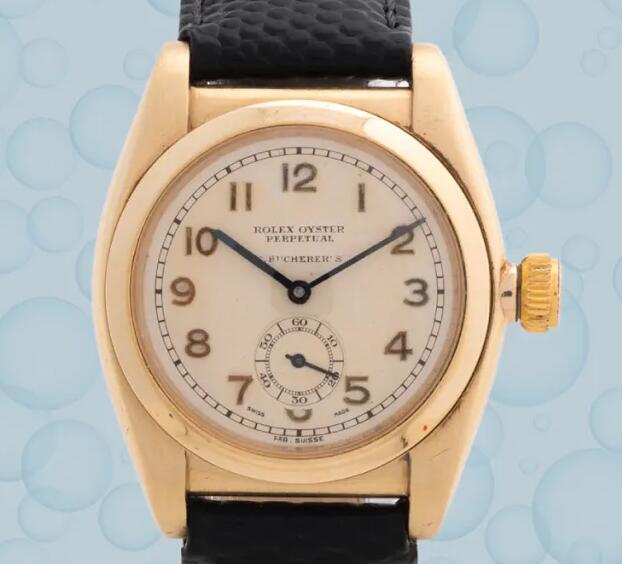
The very first Bubbleback (more technically, the very first Oyster Perpetual) reference, the 1858 is an important if little-known timepiece in Swiss Canada Rolex replica watches‘ long and storied watchmaking history. Powered by the automatic cal. 520 movement and fitted in a three-piece, 32mm Oyster case, it can be found in both stainless steel and gold in a wide variety of dial configurations.
Diameter: 32 mm
Movement: Rolex cal. 520 automatic
Case Material: Stainless steel or gold
Fake Rolex Bubbleback Reference 3131 Watches
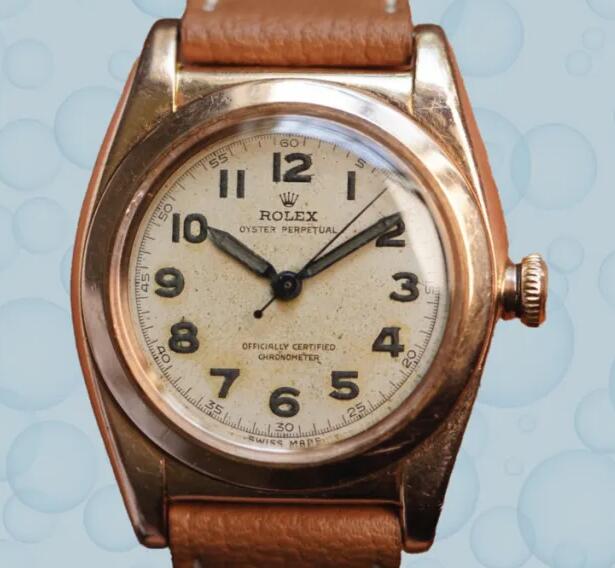
A smooth-bezel reference produced in various grades of yellow or rose gold, the 3131 was the first Bubbleback to feature a two-piece Oyster case. Featuring either an engine-turned or a fixed, smooth bezel, it came in a variety of dial configurations as well as different handsets. (Luminous pencil handsets are common, but solid feuille handsets and rarer spade types are also seen.)
Diameter: 32 mm
Movement: Rolex cal. 620 automatic
Case Material: Yellow or rose gold
Rolex Bubbleback Reference 3595 Replica Watches
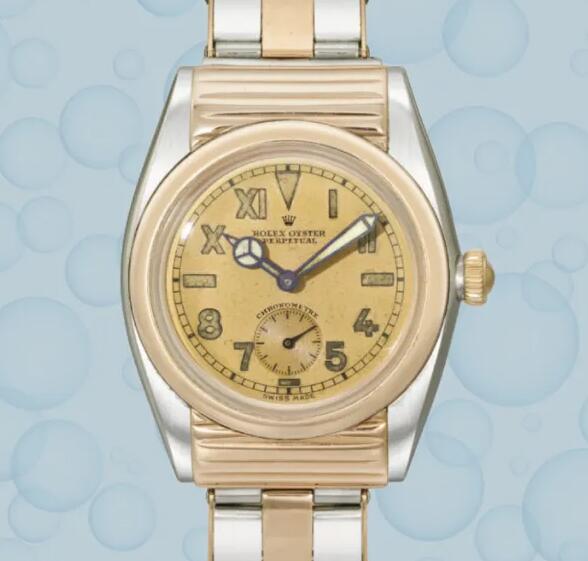
The 1:1 quality fake Rolex reference 3595 watches was the first Bubbleback reference to feature the so-called “California” dial, one in which the upper indices are Roman and the lower are Arabic. (Such a dial, introduced by Rolex in 1942 and called “Error Proof,” was evidently intended to increase legibility.) The 3595 was produced in two-tone steel and gold (either rose or yellow) and featured sub-seconds and a smooth bezel.
Diameter: 32 mm
Movement: Rolex chronometer-certified automatic
Case Material: Steel and yellow or rose gold two-tone
Rolex Bubbleback Reference 3065 Fake Watches
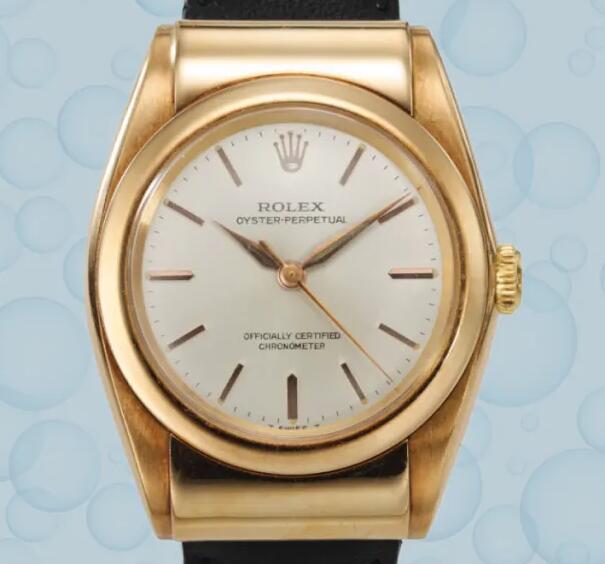
Models with “hooded” lugs—which cover the area where the strap attaches to the cheap CA Rolex replica watches—are some of the most desirable of the Bubbleback family. With production beginning in the late 1930s, the 3065 went through several iterations and is available in steel, yellow gold, rose gold, or two-tone steel and rose gold cases. All feature smooth bezels except for the 3065/7 in yellow gold, which features an engine-turned bezel.
Diameter: 32 mm
Movement: Rolex chronometer-certified automatic
Case Material: Steel; yellow gold; rose gold; steel and rose gold two-tone
Replica Rolex Bubbleback Reference 3725 Watches
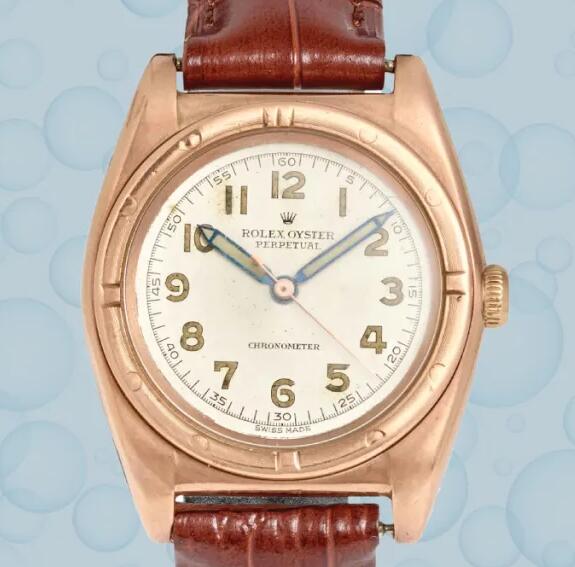
The 1940s-era Swiss movements copy Rolex 3725 watches in either rose gold or stainless steel and yellow gold two-tone features a striking engine-turned bezel with round and trapezoidal hour indices. One of the more striking of the available dial configurations features a salmon-colored dial with luminous pencil hands and Arabic indices that matches the rose gold case.
Diameter: 32 mm
Movement: Rolex chronometer-certified automatic
Case Material: Steel and yellow gold two-tone; rose gold